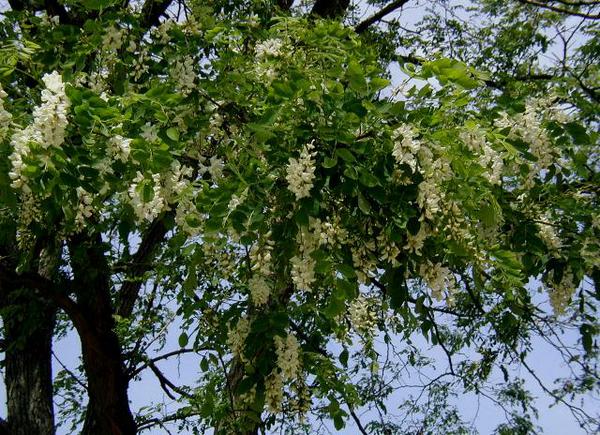
Common Name: Black Locust | Scientific Name: Robinia Pseudoacacia

Family Name: Leguminosae
Introduction
The Eclectics identified this remedy as being worth study and said this of it, “This remedy has been but little used, yet its activity is such that we may reasonably expect that experiment will develop some valuable medicinal use.” Sadly, it has not been studied, and should be. Its related to the highly medicinal carob and tamarind and there may be something here.
Resources
Notes from the Eclectic Physicians
Notes from the Eclectic Physicians
1874: Scudder
Prepare a tincture from the fresh inner bark of the black locust, 35viij.to alcohol 76%Oj.Dose gtts.j.to gtts.x.
This remedy has been but little used, yet its activity is such that we may reasonably expect that experiment will develop some valuable medicinal use. It acts on the stomach and bowels in large doses, and exerts an influence upon the nervous system. Will some of our readers test it and report?
1883: Scudder – Emetic
The leaves and inner bark of robinia pseudo‑acacia Dose: An ounce of the inner bark may be added to one pint of water, and boiled to half the quantity, and administered in doses of a wineglassful every ten minutes, until emesis ensures.
A tincture might be employed in some cases of diarrhoea and dysentery. Therapeutic Action: Black locust is emetic, cathartic, alterative, and tonic. The bark is possessed of mild, but pretty active emetic properties. It is particularly recommended in the early stages of dysentery, and is said to operate as a mild and certain emetic. Dr. Eberle says he has known it employed with as much advantage as is usually obtained from the ipecacuanha.
Disclaimer: The author makes no guarantees as to the the curative effect of any herb or tonic on this website, and no visitor should attempt to use any of the information herein provided as treatment for any illness, weakness, or disease without first consulting a physician or health care provider. Pregnant women should always consult first with a health care professional before taking any treatment.
